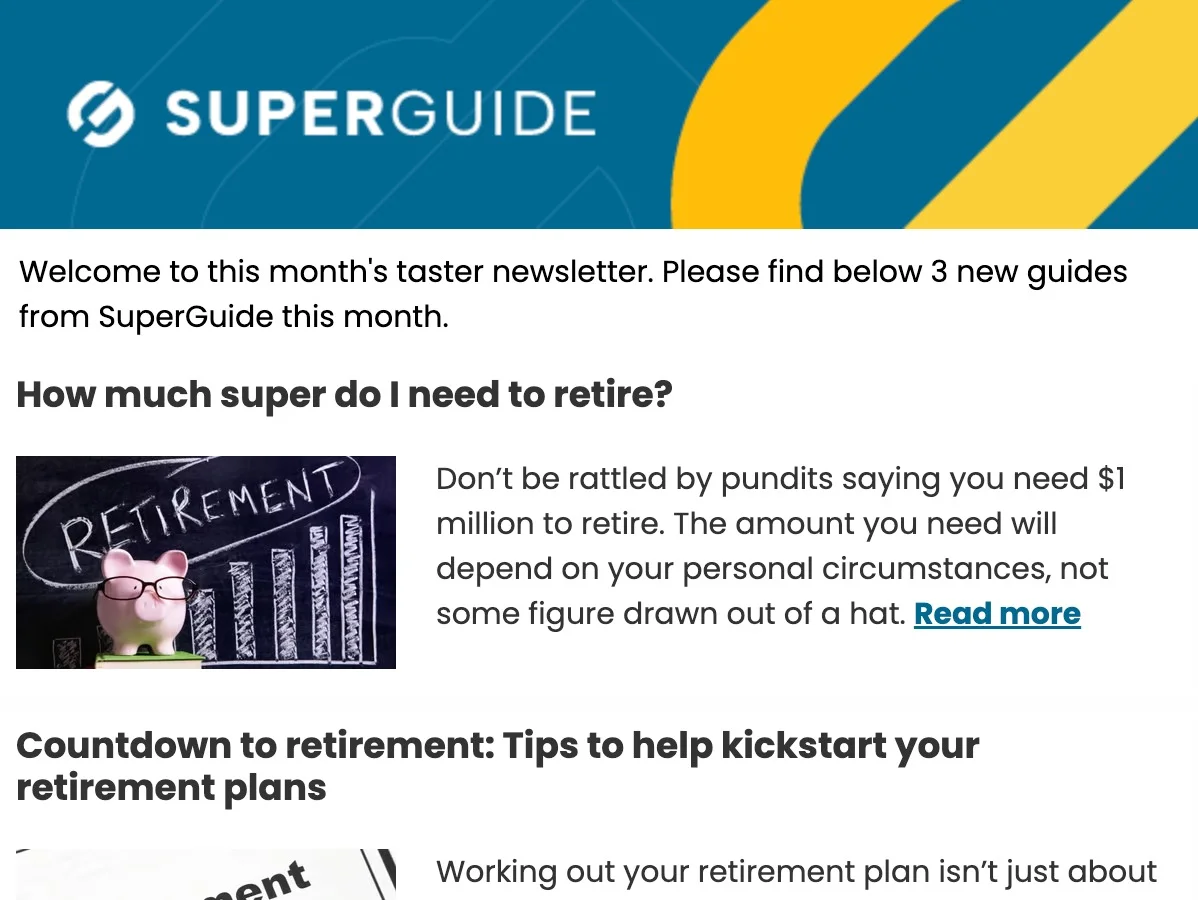In this guide
- Poor health and early retirement: The sobering financial facts
- Retiring early due to ill health: What can I do?
- Step 1: Work out your financial position
- Step 2: Set a retirement budget
- Step 3: Check if you can access super
- Step 4: Apply for your super benefit (if needed)
- Step 5: Apply for the Age Pension
- Step 6: Review your housing options
Nobody expects to become sick. Even fewer of us think declining health will see us leaving employment earlier than we want, but it’s quite common.
So, what can you do if you can no longer work due to ill health?
Poor health and early retirement: The sobering financial facts
According to research by the Australian Bureau of Statistics (ABS) on retirement and retirement intentions, 13% of people who retired in 2022–23 left their last job due to sickness, injury or disability. That’s 16,900 people from the 130,000 that retired during the financial year.
What’s more concerning is that early retirement due to ill health is often not only hard to accept if you planned to continue working, but it also has a major impact on your retirement finances.
Studies from around the world have found people who retire early due to ill health are more likely to be in income poverty than those retiring early for other reasons.
A 2018 report by the McKell Institute on the impact of ill health on retirement savings found Aussies retiring early (aged 50–54) due to ill health lose up to $142,100 in super. This consisted of $118,600 in foregone super contributions from working longer and $23,500 in early super withdrawals. The financial losses are greatest the earlier you retire, but even in your early 60s the knock to your super balance can be significant.

Free eBook
Retirement planning for beginners
Our easy-to-follow guide walks you through the fundamentals, giving you the confidence to start your own retirement plans.
"*" indicates required fields
Retiring early due to ill health: What can I do?
Although there’s little you can do if forced to retire early due to ill health, you can take some simple steps to protect your finances:
Step 1: Work out your financial position
Take stock of your current financial situation and establish how much you will have to live on when you stop work. This includes your super benefits, personal savings, and income from any investments such as a rental property, shares or bonds.
Check if you’re entitled to any government benefits, including the JobSeeker Payment or the Disability Support Pension. The Services Australia website (which includes Centrelink and Medicare) provides information about benefits you may be entitled to claim. Go ahead and apply for any Centrelink benefits you are entitled to.
Step 2: Set a retirement budget
Review your lifestyle to ensure it matches your financial resources. That means setting a budget.
Most people find their retirement expenses resemble a lop-sided smile – high in the early years before settling into a regular pattern mid-retirement, then rising again later as you age and your health declines.
Step 3: Check if you can access super
To obtain your super, you need to meet a condition of release:
If you are aged 60 or more and you:
- Have retired permanently, or
- Left a job after your 60th birthday, or
- Have turned 65
… then you can access your entire superannuation balance.
2026 SMSF calendar
Our free calendar includes due dates for important documents plus suggested dates for trustee meetings and other strategic issues for your SMSF.
"*" indicates required fields
You can choose to take your super benefit as a regular payment (like the pay you received from your former employer), take a partial or full lump sum, or keep your savings in your super account and let them continue growing.
If you are 60 or more but cannot meet the above conditions, you can still start a transition-to-retirement pension.
If you are not yet 60, you may be able to access your superannuation through another condition of release such as permanent incapacity.
Step 4: Apply for your super benefit (if needed)
If you have access to super and need the funds for your budgeted expenses or to repay debts, it is time to get in touch with your super fund to apply for your money.
Remember you can generally choose whether to receive your super in the form of lump sum withdrawals, a regular income (pension) or a combination of both.
Step 5: Apply for the Age Pension
The qualifying age for Age Pension is 67. If you have not reached the eligible age when you retire, don’t forget to apply just prior to your 67th birthday, assuming you have assets and income below the means test thresholds. If you are late applying, you will not receive back-pay for the period that you were eligible but had not applied.
Step 6: Review your housing options
Consider where you are living and whether your current home is still suitable.
Your home could also help fund your retirement through options like a reverse mortgage or loan. The government offers retirees a form of reverse mortgage through the Home Equity Access Scheme (HEAS) – previously called the Pension Loan Scheme – that may be worth investigating. The HEAS provides you with regular retirement income payments if you own your home.
Supercharge your retirement

Get super and retirement planning tips and strategies with our free monthly newsletter.
"*" indicates required fields
Alternatively, you may need to think about downsizing or relocating to another city or state to free up some money to live on and/or pay out your mortgage if you still have one.
Before downsizing, remember there are costs such as stamp duty involved in selling your home and buying a new one. You also need to consider the potential impact on any Age Pension or government benefit you’re entitled to receive.
If you sell your home and are aged 55 and over, you may be eligible to make a downsizer contribution into your super account.

Leave a Reply
You must be logged in to post a comment.